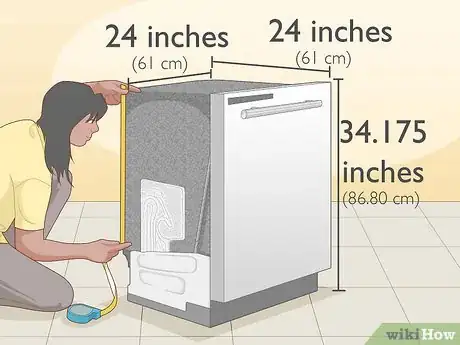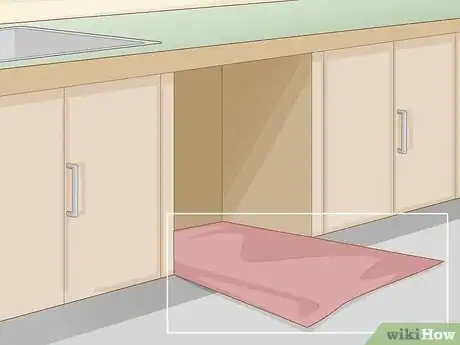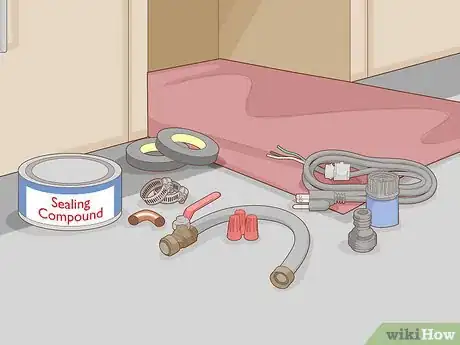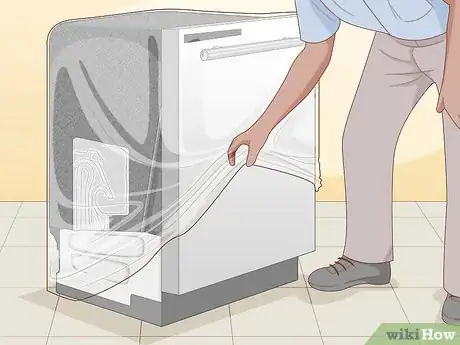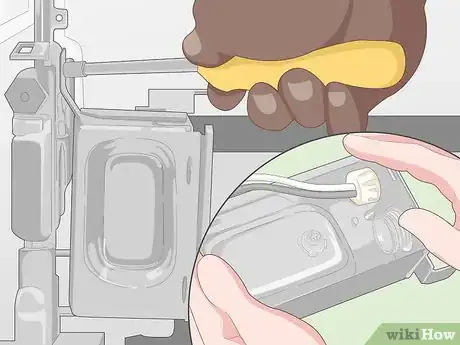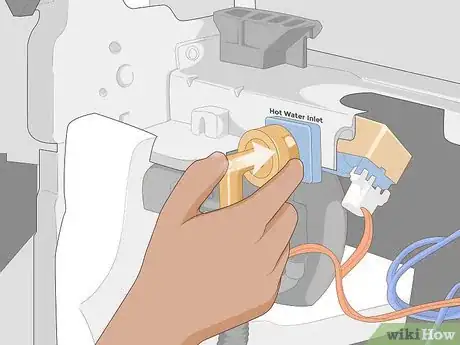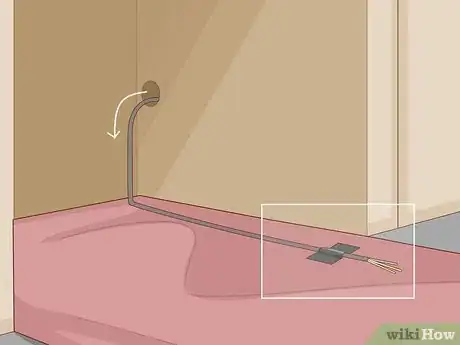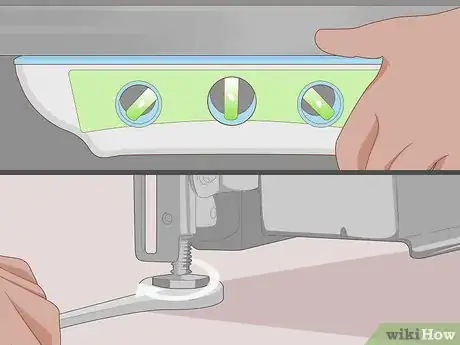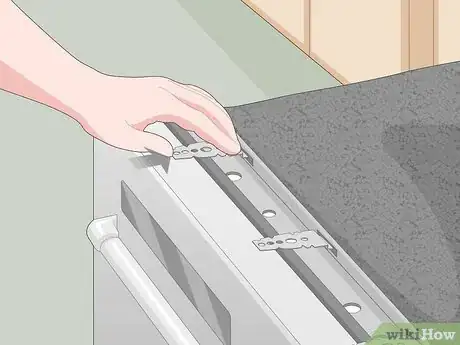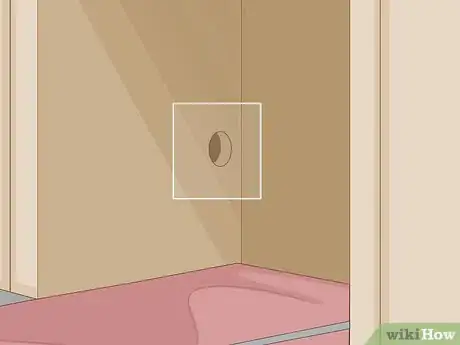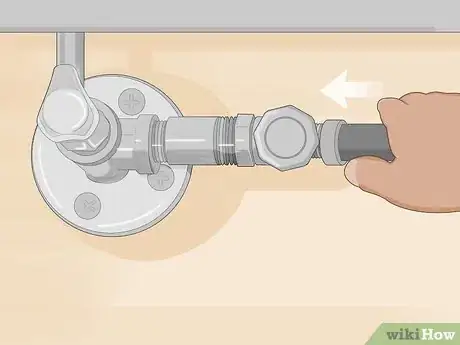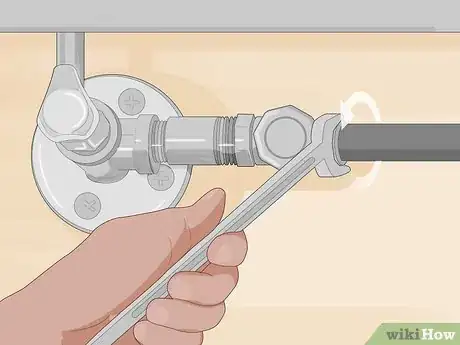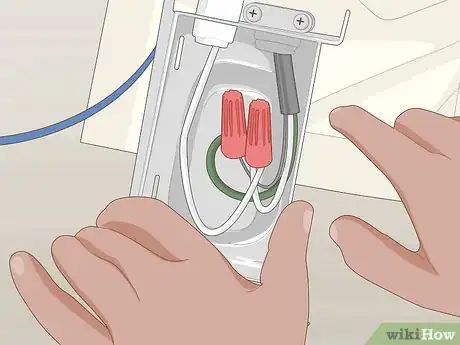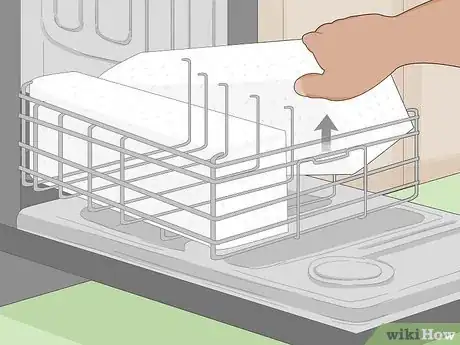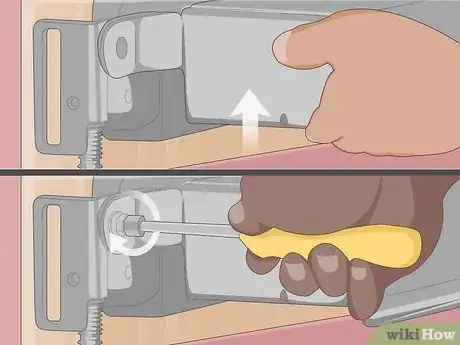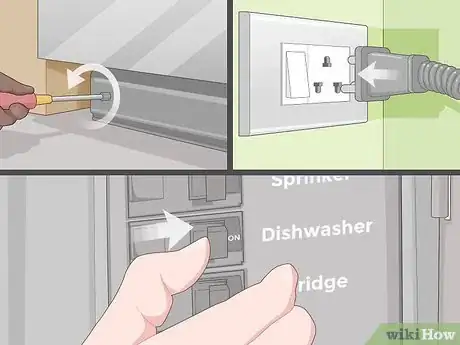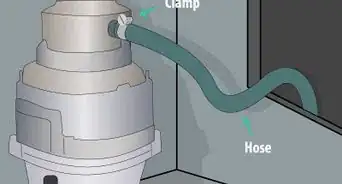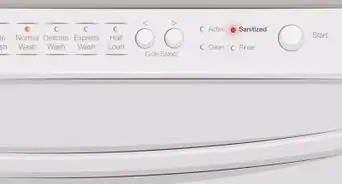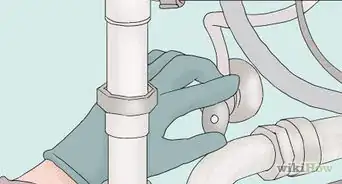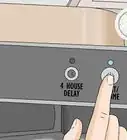This article was co-authored by wikiHow staff writer, Janice Tieperman. Janice is a professional and creative writer who has worked at wikiHow since 2019. With both a B.A. and M.A. in English from East Stroudsburg University, she has a passion for writing a wide variety of content for anyone and everyone. In her free time, you can find her working on a new crochet pattern, listening to true crime podcasts, or tackling a new creative writing project.
There are 8 references cited in this article, which can be found at the bottom of the page.
This article has been viewed 49,279 times.
Learn more...
Samsung dishwashers make it easy and stress-free to clean your dishes, but the same can’t always be said of the installation process. While the dishwasher guide recommends that a professional install the appliance, it is possible for a homeowner or resident to install a Samsung dishwasher as well. With the proper set-up, water and electric connections, and extra adjustments, you’ll soon be on your way to having a fully functioning dishwasher!
Steps
Setting up the Kitchen Space
-
1Measure the enclosure for the dishwasher. Use a tape measure to figure out the dimensions of your appliance’s enclosure. Check your installation guide to find out the specific measurements of your dishwasher model. The height, width, and depth must comfortably fit the dishwasher’s dimensions, or else you might run into complications during the installation process.[1]
- For example, if you’re installing a Samsung DW80M2020 dishwasher, your enclosure should be 34.175 inches (86.80 cm) high, 24 inches (61 cm) wide, and 24 inches (61 cm) deep.
-
2Set a mat down to protect the floor during the installation. Keep your kitchen floor covered with a mat to prevent any scratch marks. While you should always have assistance when moving the dishwasher, a mat lessens the likelihood of the appliance scraping across the floor and leaving obvious marks.[2]
- An old blanket or piece of rug can work as well, as long as you’re okay with them getting dirty.
Advertisement -
3Switch off the power and water lines before putting in the dishwasher. Turn the water gauge beneath the kitchen sink into the off position, and make sure that the breaker for the dishwasher is also switched off. This prevents the risk of flooding or possible electrocution during the installation process.[3]
- Check your home’s schematics to ensure that you’re turning off the correct breaker.
- Since the drain hose is already connected to the dishwasher, pull it through the hole in the kitchen cabinet for easier access later.
-
4Assemble the proper tools for the job. Get all of the supplies you need in one place. While many parts come with the dishwasher automatically, there are some that you need to purchase on your own. Make sure that you have 2 screws, twist-on wire connectors, a strain relief, a sealing compound, a hose clamp, electrical tape, an elbow joint, hot water supply lines, an air gap, a rubber connector, and a power cable.[4]
- You can find these materials at a home improvement or hardware store.
-
5Unpack the dishwasher so it’s ready to install. Cut off the straps from the top of the box and lift off the upper piece of cardboard so you can access the dishwasher. Make sure that you remove any additional pieces of equipment from the box, like the dishwasher’s kick plate. Before you continue on with the installation, make sure that you’ve taken any extra pieces of packing material out of the box and thrown them away.[5]
Securing the Dishwasher into Place
-
1Unscrew the junction box cover and install the strain relief. Use a screwdriver to disconnect the metal cover from the front of the junction box. Use the same tool to attach the strain relief to the back edge of the box. If you’re unsure where the junction box is, search for a piece of metal that looks like a drawer. The electrical wiring goes through this part, so you can find the junction box by following the wires.[6]
- For more detailed, visual instructions on how to attach the strain relief, consult your installation manual.
- Keep the cover on hand so you can reattach it later.
-
2Find the hot water line and connect it into the dishwasher. Look inside the dishwasher enclosure to find the hot water line. It’ll be next to the drain hose, and running along the left side of the enclosure. Use an elbow joint to connect the water line to the dishwasher.[7]
- At this point, the dishwasher should still be outside of the enclosure beneath the countertop.
-
3Tape the power cables into place without plugging them in. Find the power channels on the back, bottom right corner of the dishwasher. Cut off a piece of electrical tape that’s at least 4 inches (10 cm) long and use it to secure the power cable to its designated plug. You don’t want to actually attach the power cord yet—this will be done at the end of the installation process.[8]
- The power line will be running along the right side of the dishwasher enclosure.
-
4Level the dishwasher using a small wrench. Make sure that your dishwasher is level by adjusting the leveling legs with a wrench. Above all, you want the dishwasher to be even in height. However, keep in mind that most Samsung leveling legs can’t be raised beyond 1.5 inches (38 mm).[9]
- As a rule of thumb, you want to keep the legs as short as possible.
-
5Attach the installation brackets to secure the dishwasher into place. Drill enough holes into the edge of the countertop or along the inner kitchen cabinet before screwing the installation brackets in place. Check that the dishwasher is pushed into the enclosure before you attach the installation brackets. Depending on the material of your counters, you might not be able to drill directly into them. The main purpose of these brackets is to keep your dishwasher in place, so make sure that they’re securely attached.[10]
- Lay a mat or towel down beneath the countertop or cabinet to catch any drilling residue.
Connecting the Drain Hose
-
1Drill a hole into the cabinet wall adjoining the enclosure. Depending on your sink and cabinet style, you might not automatically have a hole for your drain hose. Drill a hole into the wood that’s large enough to fit the drain hose through.[11]
- Be sure to sand the edges until there are no lingering splinters that can puncture the drain hose.
- If the adjoining wall is metallic, use duct tape to cover any sharp edges instead of using sandpaper.[12]
-
2Attach the drain hose to the main pipe beneath the sink. Pull the drain hose through the hole in the kitchen cabinet to make it accessible. Next, you’ll want to connect the drain hose to the main pipe beneath your sink—the exact position will vary depending on your sink model, so check your installation guide before continuing.[13]
-
3Secure the drain hose into place with a hose clamp. Take the metal hose clamp and screw it into place onto the section of drain hose that’s closest to the main sink pipe. This clamp prevents any leakage from occurring at the end of the drain hose, so make sure that it’s attached tightly.[14]
- Although you want the clamp to be tight, double-check that the clamp isn’t puncturing or cutting the hose in any way.
Wiring the Dishwasher Correctly
-
1Plug in the proper wires into the junction box. Use a wire nut and wire connector to attach the correct wires to one another within the junction box. Make sure that wires of the same color are connected—in the case of Samsung dishwashers, this means black to black, white to white, and green to green. Screw the junction box cover back on to the box once you’ve completed this step.[15]
- Since you’ll be replacing the cover onto the box, make sure to feed the different wires through the strain relief.
-
2Check inside the dishwasher and remove any extra packaging. Peer inside the dishwasher and ensure that there’s no lingering styrofoam or plastic wrap in the machine. Since you’ll be testing your dishwasher momentarily, you want to make sure that the appliance is clean and free of junk.[16]
-
3Screw in the kick plate to the bottom of the appliance. Finish setting up the device by using a screwdriver to connect the kick plate to the bottom of the dishwasher. The kick plate resembles a long, metallic rectangle, and it only requires 2 screws to install.
-
4Switch on the power and test out the dishwasher. Flip your circuit breaker and turn the knob to your dishwasher’s water supply so you can test the machine. Don‘t put any dishes into the appliance when you run it for the first time—for now, you just want to make sure that the machine is working properly. Choose a short wash cycle option and wait for the dishwasher to stop running.[17]
- If you run into any complications, feel free to call the manufacturer or contact a home improvement store for help.
Warnings
- Make sure that at least 2 people are lifting the dishwasher whenever it has to be moved.[19]⧼thumbs_response⧽
Things You’ll Need
- Tape measure
- Mat
- Screws
- Twist-on wire connectors
- Strain relief
- Sealing compound
- Hose clamp
- Electrical tape
- Elbow joint
- Tube fittings
- Hot water supply lines
- Air gap
- Rubber connector
- Power cable
- Installation brackets
- Drill
- Screwdriver
- Mat
- Drain hose
- Sandpaper (optional)
- Kick plate
- Cable tie
References
- ↑ http://downloadcenter.samsung.com/content/UM/201703/20170306135313372/EN_SP_Installation_Manual_DW80M2020US_AA_01.pdf
- ↑ https://www.familyhandyman.com/appliance-repair/dishwasher-repair/how-to-replace-a-dishwasher/
- ↑ https://www.familyhandyman.com/appliance-repair/dishwasher-repair/how-to-replace-a-dishwasher/
- ↑ http://downloadcenter.samsung.com/content/UM/201703/20170306135313372/EN_SP_Installation_Manual_DW80M2020US_AA_01.pdf
- ↑ http://downloadcenter.samsung.com/content/UM/201703/20170306135313372/EN_SP_Installation_Manual_DW80M2020US_AA_01.pdf
- ↑ http://downloadcenter.samsung.com/content/UM/201703/20170306135313372/EN_SP_Installation_Manual_DW80M2020US_AA_01.pdf
- ↑ http://downloadcenter.samsung.com/content/UM/201703/20170306135313372/EN_SP_Installation_Manual_DW80M2020US_AA_01.pdf
- ↑ https://www.manualslib.com/manual/1220109/Samsung-Dw80k7050-Series.html?page=9#manual
- ↑ https://www.manualslib.com/manual/1220109/Samsung-Dw80k7050-Series.html?page=15#manual
- ↑ http://downloadcenter.samsung.com/content/UM/201703/20170306135313372/EN_SP_Installation_Manual_DW80M2020US_AA_01.pdf
- ↑ http://downloadcenter.samsung.com/content/UM/201703/20170306135313372/EN_SP_Installation_Manual_DW80M2020US_AA_01.pdf
- ↑ https://www.manualslib.com/manual/1220109/Samsung-Dw80k7050-Series.html?page=18#manual
- ↑ https://www.familyhandyman.com/appliance-repair/dishwasher-repair/how-to-replace-a-dishwasher/
- ↑ https://www.manualslib.com/manual/1220109/Samsung-Dw80k7050-Series.html?page=19#manual
- ↑ https://www.manualslib.com/manual/1220109/Samsung-Dw80k7050-Series.html?page=20#manual
- ↑ http://downloadcenter.samsung.com/content/UM/201703/20170306135313372/EN_SP_Installation_Manual_DW80M2020US_AA_01.pdf
- ↑ http://downloadcenter.samsung.com/content/UM/201703/20170306135313372/EN_SP_Installation_Manual_DW80M2020US_AA_01.pdf
- ↑ https://www.manualslib.com/manual/1220109/Samsung-Dw80k7050-Series.html?page=6#manual
- ↑ http://downloadcenter.samsung.com/content/UM/201703/20170306135313372/EN_SP_Installation_Manual_DW80M2020US_AA_01.pdf
